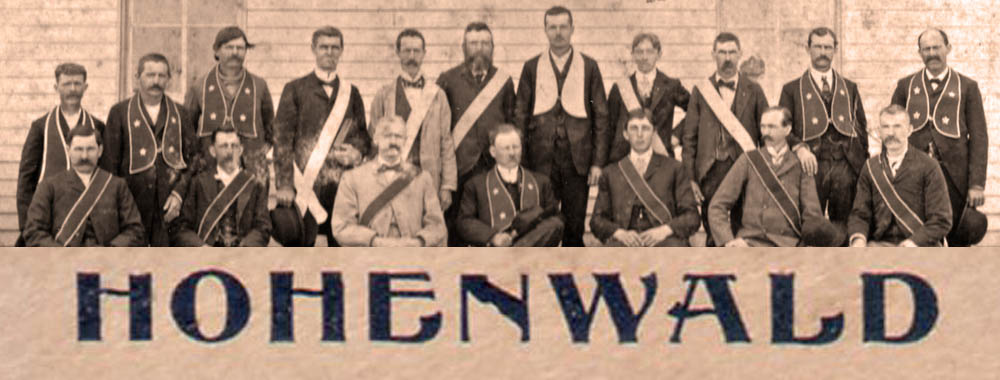|
Hohenwald, Tennessee was a
real place,
unlike Grinders Switch which was 10 miles north on the railroad.
Grinders Switch was an almost mythical place which was to Mini Pearl on
Grand Ole Opry as Lake Wobegon to Garrison Keeler on NPR. Mini
brought the news from Grinders Switch from 1940 until she died in 1996.
She was known for her Gingham dress and decorated straw hat with the
$1.98
price tag still dangling from the side. I was only 5 when I heard my
first broadcast of Grand Ole Opry, and my dad was sure that she must be
talking about Hohenwald because Grinders Switch was just a one room
shack of a depot before you got to Centerville. Later when TV came
along and we saw what she looked like my dad knew she had to have
gotten that hat at his father's old store in Hohenwald. Rod (Leon)
Brasfield, who called himself the "Hohenwald Flash" also on Grand Ole
Opry also claimed Hohewald as his home and he and Mini took turns with
the punchline and invented a new kind of comedy with no straight man
and every retort was a punch line. They introduced the world to the
stereotypical hillbilly.
The picture above is of the International Order of Odd Fellows, the
fraternal order of the day and location. The other organization in town
used hoods and robes, but they didn't have their picture taken. My
grandmother, Addie Williams Goodman used to tell me that every one knew
them anyway by their shoes. There were not that many men and Grand
daddy's store was the only place to get shoes.
The reason for writing this
is to introduce my family to a branch of the family that they have
never heard of before. If you run your mouse over a picture and see the
cursor turn into a pointing hand, you can right click and download a
full size
image to your computer and print it out or include it after resizing on
you image editor. Double click the top image and see the difference as
opposed to the Mini Pearl picture.

This is the store and the
prices are marked in cents.
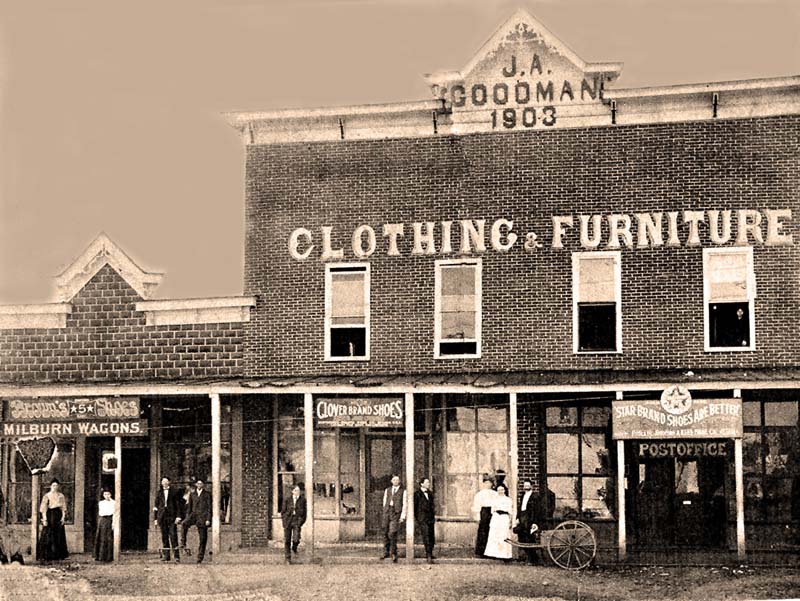
This is the John Andrew
Goodman building which housed his store , the Post Office and other
stores. Notice the number of people leaning on a post. That is
equivalent to saying "cheese" in our generation. It kept people from
moving during the lengthy exposure required by ancient cameras.
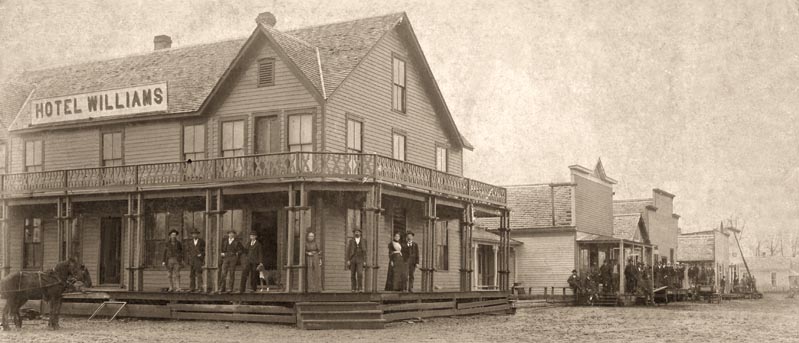
Addie Williams' Father owned
the Hotel Williams. Addie was my Grandmother and she married John
Andrew Goodman, who was my Grand Father. I have a brother who is John
Andrew Goodman and he has a son who is John Andrew Goodman.
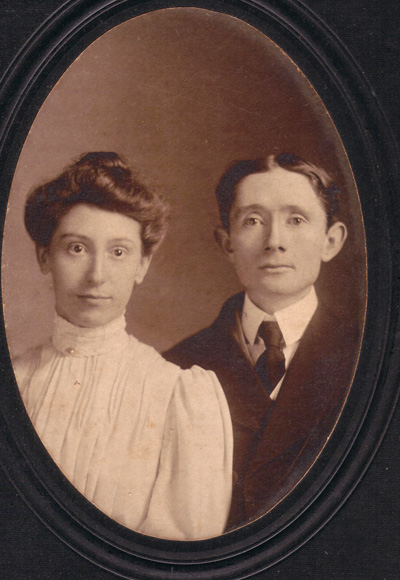
This is John Andrew
Goodman and Addie Williams from a photograph in Hohenwald, Tenn.
|
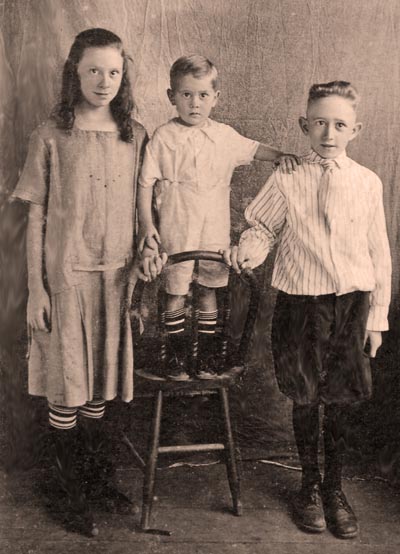
Addie Williams from a photograph in
Hohenwald, These
are the children of John Andrew Goodman and Addie Williams. This is
Laura, Paul and
Felix Leon Goodman. |
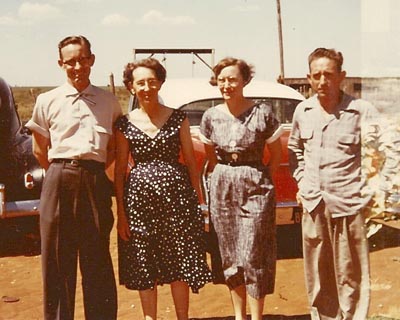
Paul,
Addie, Laura and Leon in Brownfield, Texas in the late '50s.
|
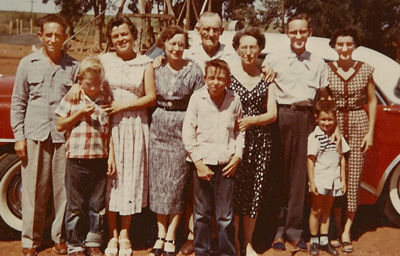
Leon, Margaret, Laura,
Frosty, Addie, Paul & Lavena.
Front row: Jim, Bill & Paul's son.:
|
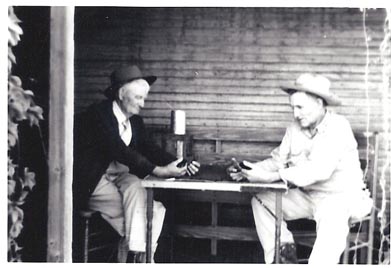 L L
Frosty, Addie's
husband in her later years, plays dominoes with a friend on the left.
It appears that they hold their active dominoes in their hand for a one
on one game, as opposed to tipping and sliding as with a public game.
|
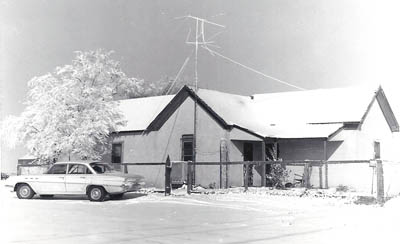
This is what Addie and Frosty's house looked
like in 1963. It seems to have been rebuilt with more modern materials.
I had heard that many original houses had collapsed in the area from
accumulated sand in the ceilings left by dust storms.
|
This is Addie Williams Goodman's life as I know it. There are no other
family members to guide me and I must use my own impressions of what
happened by the images I carry in my mind at the age of 73.
Addie was born in Howhenwald, Tennessee into a good family and married
a man named John Andrew Goodman who was an established Merchant. She
had three children, named Laura, Felix Leon, and Paul. John became ill
with a resperatory disease which I assume was consumption or
tuberculosis as it is known now. The harsh winters and altitude of
Hohenwald were not helping his condition and so the family moved to
Florida and my father, Leon made a few friends and enjoyed a summer of
swimming. It became obvious that other things besides warm weather was
needed and the family packed up for a trip to Arizona which was
supposed to be the cure for consumption at the time. The move was too
late and my father, Leon became the man of the family at age 11.
Leon went to school in Tempe, Arizona for a couple of years and won
some track events in spite of his slight build. As an adult he was only
5'4" and weighed barely 120 lbs. Addie and the children then went to El
Paso, Texas where she established a boarding house using the knowledge
she had from her family's experience in the hotel business. Leon was
able to enter an apprenticeship with the Southern Pacific Rail Road as
a machinist.
By the time he met my mother, Margaret Sabin, he had become established
in his trade, but the Great Depression had started and even men with
skills were at risk for unemployment.
When Leon and Margaret returned from their one night honeymoon
across town, Margaret was told that she was family now and had to help
out in the boarding house. They had only $15 between the two of them
and Leon had to go out on a bridge gang for several weeks. They each
took $5 and put the other $5 in the small jewelry box for whoever was
going to need it next. The rest of that story will be on another page
about Leon and Margaret.
Addie met a man named Forest Ernest who had two children, Sonny Boy and
Edna Belle. He had been the Sheriff of Pietown, New Mexico and was
going to be a dry land farmer near Lubbock, Texas. Addie spent the rest
of her years as the wife of a dust bowl farmer a few miles outside of
Brownfield, Texas.
I will comment later on some cultural differences of this life style.
|
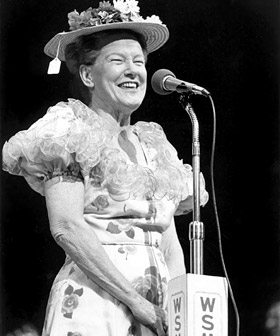
|
Cousin Mini Pearl
|
|
